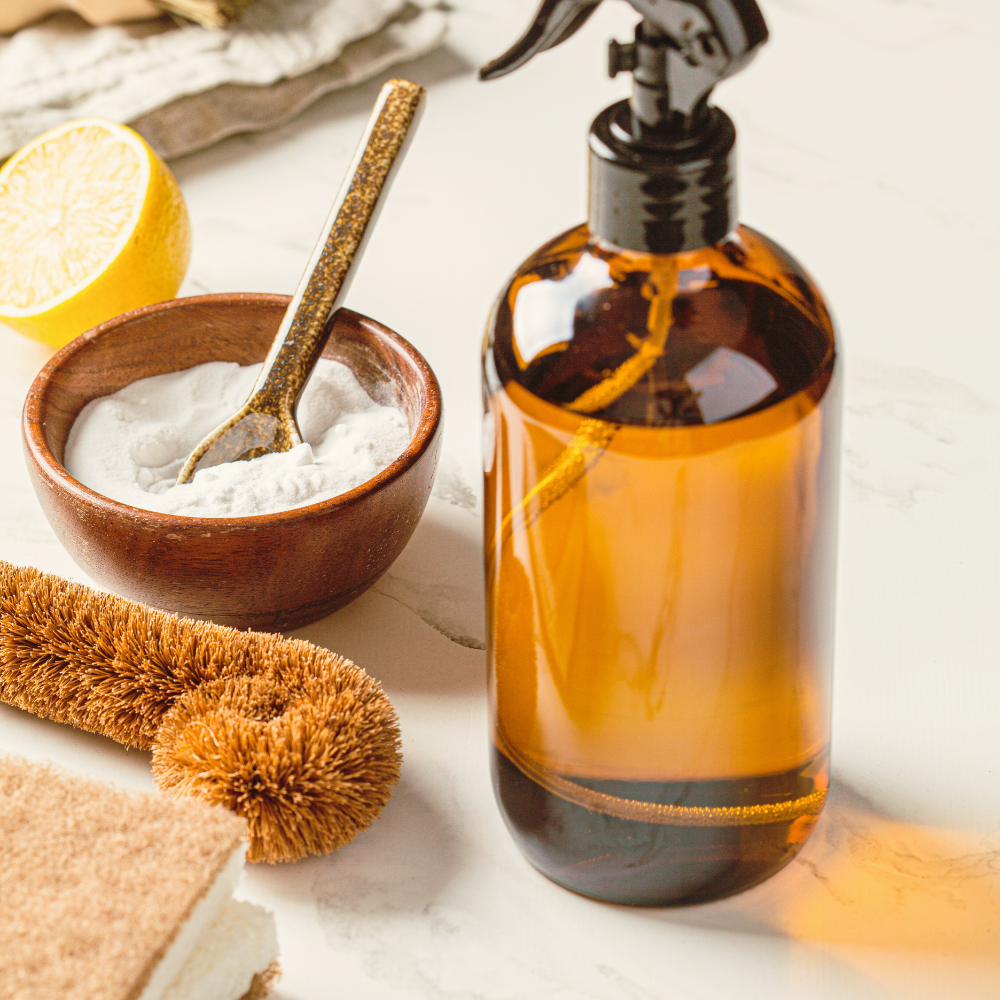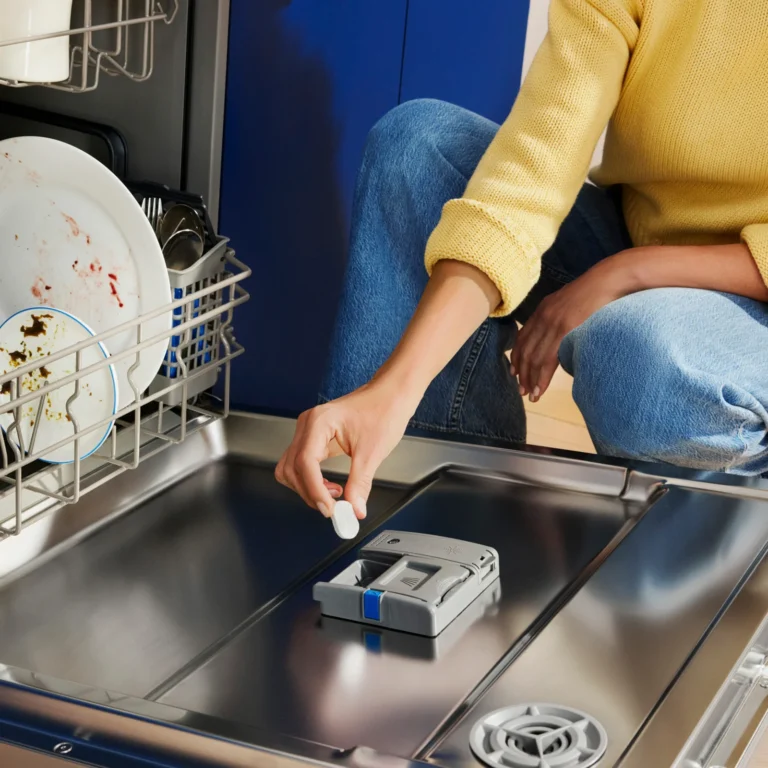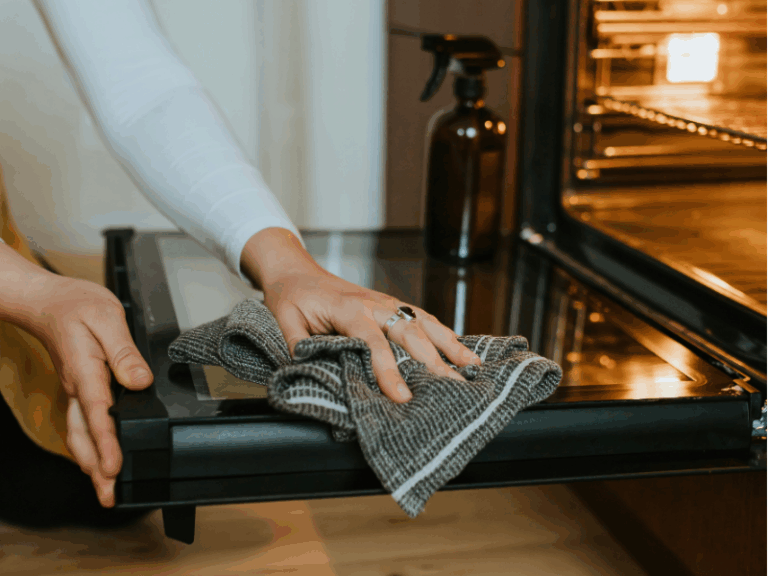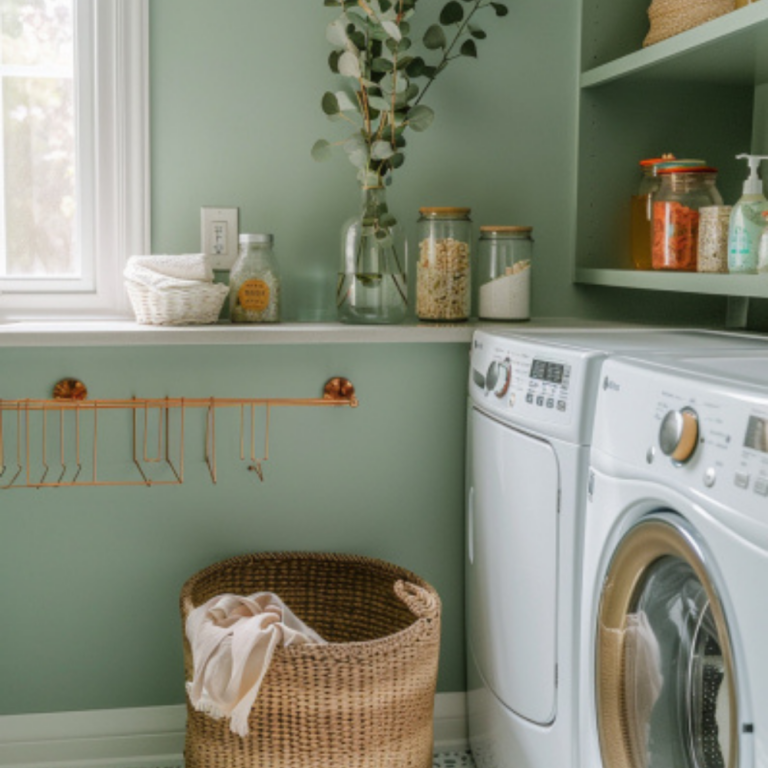
Key Takeaways
- DIY cleaning products replace toxic chemicals with safe, simple ingredients like vinegar, baking soda, and castile soap.
- Making your own cleaners reduces plastic waste and water pollution while saving money on store-bought products.
- You can customize DIY recipes with essential oils or keep them unscented, giving you full control over ingredients.
Take a stroll down the cleaning aisle at the store and you’ll spot rows of sprays, powders, and wipes that promise a sparkling home. But what you don’t always see are the hidden problems—harsh chemicals that can affect your health, plastic bottles that add to landfill waste, and ingredients that end up polluting our rivers and oceans once they’re rinsed away.
You don’t need a closet full of mystery chemicals to keep things clean. With just a handful of pantry staples, you can whip up DIY cleaning products that are safe, effective, and budget-friendly. Vinegar, baking soda, castile soap, and a few drops of essential oils are often all that is needed to tackle grease, odors, and germs.
In this guide, you’ll learn why switching to DIY cleaning products makes sense, the essential ingredients every home should have, and easy recipes for every room in your house, from streak-free glass cleaner to laundry detergent you can mix up in minutes.
Why Switch to DIY Cleaning Products?
Making your own cleaners isn’t just about saving money—it’s about keeping your home healthier and reducing the waste that ends up in our environment. A 2023 study by the Environmental Working Group (EWG) tested 30 common cleaning products and found over 500 different chemicals listed in their ingredients. Nearly 200 were flagged as hazardous, with links to asthma, cancer, and other health risks.
That’s one big reason why so many people are turning to DIY cleaning products made with safe, simple ingredients.
🩺 Health and Safety
Many store-bought cleaners are loaded with potent ingredients like bleach, ammonia, and artificial fragrances. These can irritate your skin, trigger asthma, or leave chemical residues on the counters and tables your family uses every day. DIY cleaning products rely on simple ingredients like vinegar, baking soda, and castile soap that still get the job done—without filling your home with extra toxins.
🌍 Environmental Impact
When you mix your own cleaners, they break down safely instead of polluting rivers and oceans. Using reusable glass spray bottles also reduces plastic waste. It may seem like a small step, but over time, it makes a significant difference for the planet.
💰 Cost-Effectiveness
DIY cleaners are made from pantry staples that cost just pennies per batch. A box of baking soda or a jug of vinegar can replace several specialty products. That means fewer trips to the store and more money in your pocket.
🌸 Control Over Ingredients and Scents
With DIY, you’re in charge. Want your spray to smell like lavender or lemon? Add a few drops of essential oil. Prefer no scent at all for sensitive skin or allergies? Leave it out. Either way, you’ll know exactly what’s in your cleaner—and that peace of mind is priceless.
Essential Ingredients for Natural Cleaning
You don’t need a closet full of products to keep your home clean. In fact, most natural cleaning recipes come down to just a handful of everyday ingredients you probably already have in your kitchen. Each one has its own superpower, whether it’s cutting grease, scrubbing away stains, or leaving things smelling fresh.
Here’s a quick guide to the essentials, what they do, and the best ways to use them:
| Ingredient | What It Does | Best Uses |
|---|---|---|
| Distilled White Vinegar | Cuts grease, dissolves mineral deposits, deodorizes | All-purpose sprays, glass cleaner, fabric softener |
| Baking Soda | Gentle abrasive, neutralizes odors | Scrubs, carpet freshener, drain cleaner |
| Washing Soda | Stronger alkaline than baking soda; boosts cleaning power | Laundry detergent, stain remover, oven cleaner |
| Borax | Softens water, deodorizes, lifts stains | Laundry detergent, cleaning paste |
| Castile Soap (liquid or bar) | Plant-based, biodegradable soap | Dish soap, laundry, all-purpose sprays |
| Hydrogen Peroxide (3%) | Natural disinfectant, whitens, removes stains | Stain remover, bathroom cleaner, sanitizing |
| Lemon Juice / Citrus Peels | Natural acid, cuts grease, brightens | All-purpose sprays, stain remover, cutting boards |
| Essential Oils (Tea Tree, Lavender, Lemon, Eucalyptus) | Antibacterial/antifungal, add fresh scent | All-purpose sprays, laundry, room sprays, wood polish |
| Rubbing Alcohol / Vodka | Disinfects, evaporates quickly | Glass cleaner, disinfectant wipes, room sprays |
| Cornstarch | Absorbs grease, polishes, deodorizes | Carpet freshener, glass cleaner, furniture polish |
| Olive Oil | Conditions and polishes | Wood furniture polish, stainless steel cleaner |
With just a few simple ingredients, you can replace dozens of chemical-based cleaners.
Natural Cleaning Recipes by Room
Now that you know the powerhouse ingredients, let’s put them to work. Below you’ll find easy, step-by-step recipes organized by room so you can grab exactly what you need, whether it’s a spray for your kitchen counters, a scrub for the bathroom, or a freshener for your living room. Each recipe includes quick pro tips and safety notes so you can clean with confidence.
🏡 Whole Home (All-Purpose)
Citrus-Infused Vinegar Spray
- 2 cups white vinegar
- 2 cups water
- Peels from 2–3 lemons or oranges
- 10 drops tea tree oil
Soak the peels in vinegar for 1–2 weeks, then strain and mix with water and oil.
Suggestion: Avoid natural stone, such as marble or granite.
Castile Soap Cleaner
- 2 tbsp liquid castile soap
- 2 cups warm water
- 5 drops lavender oil
Mix in a spray bottle, shake gently.
Pro tip: Works well for kids’ toys since it rinses clean.
Suggestion: Safe on most household surfaces.
Streak-Free Glass Cleaner
- 2 cups warm water
- ½ cup white vinegar
- ¼ cup rubbing alcohol
- 1 tbsp cornstarch
- Optional: 5 drops lemon oil
Mix in spray bottle, shake until cornstarch dissolves.
Pro tip: For best results, wipe with a cotton cloth or Swedish dishcloth.
🍳 Kitchen
DIY Dish Soap
- 1 cup liquid castile soap
- 1 tbsp washing soda
- 1 cup warm water
- 10 drops lemon oil
Mix in a dispenser, shake before use.
Suggestion: For handwashing only, not for dishwashers.
Dishwasher Tablets
- 1 cup washing soda
- 1 cup baking soda
- ½ cup citric acid
- ½ cup coarse salt
- ½ cup distilled white vinegar
- 10–15 drops lemon or orange essential oil (optional)
Mix the dry ingredients in a bowl, then slowly add the vinegar until the texture resembles damp sand. Press the mixture into silicone molds or ice cube trays and let it dry for 24 hours. Store in an airtight glass jar.
Suggestion: Safe for most dishwashers. Avoid overfilling molds to prevent crumbling.
Homemade Disinfectant Wipes
- 2 cups distilled water
- 1 cup rubbing alcohol or vodka
- 10 drops tea tree oil
- Reusable cotton cloth squares
Mix liquids in a jar, add cloths, and let them soak.
Pro tip: Perfect for fridge handles and light switches.
Suggestion: Avoid granite, marble, or natural stone.
Kitchen Degreaser
- 1 cup white vinegar
- ½ cup rubbing alcohol
- 1 cup warm water
- 10 drops lemon oil
Mix in spray bottle, spray stovetop, let sit 5 minutes, then wipe clean.
Suggestion: Safe for stainless steel, tile, and laminate. Avoid stone.
Wood & Stainless Steel Polish
- ¼ cup olive oil
- ¼ cup white vinegar
- 10 drops of orange oil
Mix the solution in a spray bottle, shake well, and spray it onto a cotton cloth. Then, buff the area gently.
Pro tip: Test on a hidden spot first.
Suggestion: Safe for finished wood and stainless steel. Avoid unfinished wood.
🚽 Bathroom
Tub & Tile Cleaner
- 1 cup baking soda
- ¼ cup castile soap
- 10 drops eucalyptus oil
Mix into a paste, apply with sponge, scrub, rinse.
Pro tip: Let sit for 10 minutes on tough soap scum.
Suggestion: Safe for tile, porcelain, fiberglass. Avoid stone.
Foaming Hand Soap
- 2 tbsp liquid castile soap
- 1 tbsp olive oil or glycerin
- 1 cup distilled water
- 5 drops peppermint or lavender oil
Mix in foaming soap dispenser, swirl gently.
Pro tip: Add glycerin for softer hands.
Mold Spray
- 1 cup vinegar
- 1 cup water
- 20 drops tea tree oil
Mix in spray bottle, spray on moldy areas, let sit 30 minutes, scrub.
Pro tip: Leave overnight for stubborn spots.
Suggestion: Safe for tile and grout. Avoid natural stone.
Toilet Bowl Cleaner
- ½ cup baking soda
- ½ cup white vinegar
- 10 drops tea tree oil
Sprinkle soda, pour vinegar, let fizz 10 minutes, scrub with brush, flush.
Suggestion: Safe for porcelain toilets only.
👕Laundry Room
DIY Laundry Detergent (Powder)
- 1 cup washing soda
- 1 cup borax
- 1 bar castile soap (grated)
Blend to fine powder, store in jar, use 1–2 tbsp per load.
Pro tip: Add ½ cup hydrogen peroxide for brighter whites.
Suggestion: Safe for HE and standard machines.
Fabric Softener Alternative
- ½ cup white vinegar
- 10 drops lavender or eucalyptus oil
Add vinegar to fabric softener compartment, add oil if desired.
Pro tip: Great for softening towels and reducing static.
Suggestion: Don’t spill vinegar on natural stone counters.
Homemade Stain Remover Spray
- 1 cup hydrogen peroxide (3%)
- ½ cup baking soda
- 1 tsp castile soap
Mix in spray bottle, spray stain, let sit 15 minutes, wash.
Suggestion: Spot test on delicate fabrics like silk or wool.
DIY Dryer Sheets
- Cotton cloth squares
- ½ cup white vinegar
- 15 drops lavender oil
Soak cloths, wring out, store in jar. Toss one in dryer per load.
Suggestion: Safe for all dryer-safe fabrics.
Laundry Scent Booster
- 2 cups Epsom salt
- ½ cup baking soda
- 20–30 drops essential oils
Mix in jar, add 2–3 tbsp to washer drum.
Suggestion: Safe for all machines.
Soap Nuts (Optional Swap)
Place 4–5 soap nuts in a cloth bag, toss in washer, reuse up to 10 times.
Pro tip: Perfect for baby clothes and delicates.
🛋️ Living Spaces
Sofa & Fabric Freshener Deodorizers and Air Fresheners
Store-bought sprays and plug-ins often rely on synthetic fragrances that mask odors instead of removing them. These simple DIY recipes use natural ingredients to freshen your home and absorb unwanted smells.
Carpet Freshener Powder
- 1 cup baking soda
- 15 drops lavender or lemon essential oil
Mix in a jar, sprinkle lightly over carpets or rugs, and let sit for 20 minutes. Then, vacuum.
Suggestion: Safe for most carpets and rugs, but avoid areas with dampness.
Natural Vinegar Air Freshener
- 1 cup distilled white vinegar
- 1 cup water
- 10 drops tea tree or eucalyptus oil
Mix the solution in a spray bottle, shake well, and spray it into the air to neutralize odors.
Pro tip: Great for eliminating kitchen and pet smells.
Suggestion: Safe for air; avoid spraying directly on natural stone surfaces.
Simmer Pot Freshener
- 4 cups water
- 1 sliced lemon or orange
- 2 cinnamon sticks
- 1 tsp whole cloves (optional)
Combine ingredients in a saucepan, bring to a simmer, and let the steam freshen your home.
Pro tip: Add a sprig of rosemary or a splash of vanilla for seasonal scents.
Suggestion: Stove-top method only; do not leave unattended.
DIY Room Spray
- 1 cup distilled water
- 2 tbsp vodka or rubbing alcohol
- 15 drops lavender or grapefruit oil
Mix in spray bottle, shake before use, mist into air or onto fabrics.
Pro tip: Spray on curtains for long-lasting freshness.
Suggestion: Safe for fabrics and air, avoid direct contact with leather or unfinished wood.
🪣Specialty Cleaners & Fresheners
Oven Scrub Paste
- ½ cup baking soda
- 2 tbsp water
- 1 tbsp castile soap
Mix to paste, spread inside oven, let sit overnight, scrub, wipe clean.
Suggestion: Safe for metal oven interiors, avoid heating elements.
Drain Refresher
- ½ cup baking soda
- ½ cup white vinegar
Pour soda down drain, add vinegar, let fizz 10 minutes, flush with boiling water.
Suggestion: Safe for pipes, not for stone sinks.
Carpet Freshener Powder
- 1 cup baking soda
- 10 drops lavender oil
Mix in jar, sprinkle on carpet, let sit 15 minutes, vacuum.
Suggestion: Safe for carpets and rugs, not for wet areas.
💡tips
6 Safety Tips and Best Practices
Making your own cleaners is simple, but a few smart habits will help you use them safely and keep them working their best.
- Store in Glass Bottles or Jars: Homemade cleaners are best kept in glass spray bottles, mason jars, or stainless-steel containers. Glass doesn’t react with vinegar, alcohol, or essential oils the way plastic sometimes can, and it’s reusable for years.
- Label Everything Clearly: Once you mix a cleaner, write the name and the date right on the bottle or use a simple paper label. That way, you always know what’s inside and how fresh it is.
- Mind the Shelf Life: Most DIY cleaners last 1–3 months when stored in a cool, dark place. Any item containing fresh lemon juice or citrus peels should be used within 2–3 weeks. If a mixture ever smells off or changes color, it’s time to make a new batch.
- Be Careful with Essential Oils: Essential oils add cleaning power and great scents, but some can be irritating to pets or sensitive skin. If you have cats or dogs, avoid using tea tree oil and strong citrus oils in areas they frequently touch.
- Know Where Not to Use Vinegar: Vinegar is an excellent cleaning agent, but it can damage natural stones, such as marble, granite, or limestone. Stick to wood, tile, and glass, and opt for alternative solutions for stone surfaces.
- Test Before You Clean Big: Before applying a new cleaner to a large surface, test it in a small, inconspicuous area first. This way, you can be sure it won’t cause streaks, stains, or damage.
FAQs on DIY Cleaning Products
Yes! Simple ingredients like vinegar, baking soda, and castile soap can tackle grease, odors, and stains just as effectively as many store-bought cleaners. They may not carry the same “kills 99.9% of germs” label, but they’re highly effective for everyday cleaning.
The most useful basics include vinegar, baking soda, washing soda, borax, castile soap, hydrogen peroxide, lemon juice, essential oils, rubbing alcohol, cornstarch, and olive oil. With these, you can mix up recipes for every room in your house.
Most DIY cleaners last 1–3 months when stored in a cool, dark place. Mixtures that use fresh citrus juice or peels should be used within 2–3 weeks. If a cleaner changes color or smells off, it’s time to make a new batch.
Some ingredients, like vinegar and lemon juice, kill some germs, but hydrogen peroxide or rubbing alcohol are more effective natural disinfectants. These options are great for bathrooms, kitchens, and high-touch surfaces.
Not always. Vinegar and acidic cleaners can damage natural stones, including marble and granite. Baking soda is gentle but may scratch soft surfaces if used too roughly. Always test a small, hidden spot first.
This Has Been About DIY Cleaning Products
I hope this guide helps you feel more confident about making your own natural cleaners at home. With just a few simple ingredients, you can tackle grease, stains, odors, and germs without the hidden chemicals, plastic bottles, or single-use wipes that come with most store-bought products.
Every time you mix up a spray in a reusable glass bottle or swap dryer sheets for a DIY version, you’re not just keeping your home safer; you’re also reducing plastic waste and cutting down on pollution in our air, water, and soil.
💬What about you? Have you tried making your own natural cleaners, or do you have a favorite DIY recipe to share? Drop it in the comments—I’d love to hear your ideas and tips!
📚References
- Environmental Working Group. (2023). EWG study finds hundreds of hazardous VOCs in household cleaning products. Environmental Working Group. Retrieved August 27, 2025, from https://www.ewg.org/news-insights/news/2023/07/ewg-study-finds-hundreds-hazardous-vocs-household-cleaning-products
- American Lung Association. (2024). Safer spring cleaning for healthy lungs and a cleaner home. American Lung Association. Retrieved August 27, 2025, from https://www.lung.org/blog/safer-spring-cleaning-for-healthy-lungs






